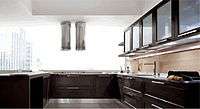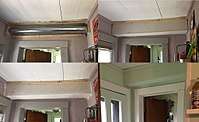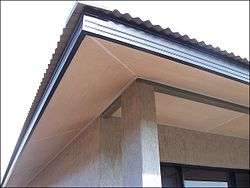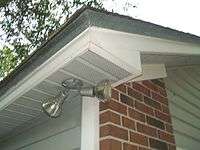Soffit


A soffit is an exterior or interior architectural feature, generally the underside of any construction element. A structure to fill the space between the ceiling and the top of cabinets mounted on the wall is called a soffit, as is the material connecting an exterior wall to the edge of the roof under the eaves.
Etymology
Soffit is from French: soffite, formed as a ceiling; and directly from suffictus for suffixus, Latin: suffigere, to fix underneath).
Soffits in homes and offices
In architecture, soffit is the underside of any construction element.
Examples of soffits include:
- the underside of an arch or architrave (whether supported by piers or columns)
- the underside of a flight of stairs, under the classical entablature
- the underside of a projecting cornice, or side of chimney
- the underside of a ceiling to fill the space above the kitchen cabinets, at the corner of the ceiling and wall
- the underside of an office ceiling where tiles (generally gypsum) are suspended, fastened directly or bonded to a grid system attached to the walls or ceiling
- the exposed undersurface of any exterior overhanging section of a roof eave
- the wall into which loudspeakers are mounted in a recording studio
- a drop-down box used to mount a kitchen ventilation hood under a sloped or high ceiling[1]
Under the eaves of a roof
In popular use, soffit most often refers to the material forming a ceiling from the top of an exterior house wall to the outer edge of the roof, i.e., bridging the gap between a home's siding and the roofline, otherwise known as the eaves. When so constructed, the soffit material is typically screwed or nailed to rafters known as lookout rafters or lookouts for short.
Soffit exposure profile (from wall to fascia) on a building's exterior can vary from a few centimetres (2-3 inches) to 3 feet or more, depending on construction. It can be non-ventilated or ventilated, to prevent condensation. A grill that covers the venting opening on the bottom of the soffit is called a soffit vent. A soffit joist is also a related piece.
See also
References
- ↑ "Range Hood Installation Under Sloped / High Ceiling". Futuro Futuro. Retrieved 15 November 2012.


